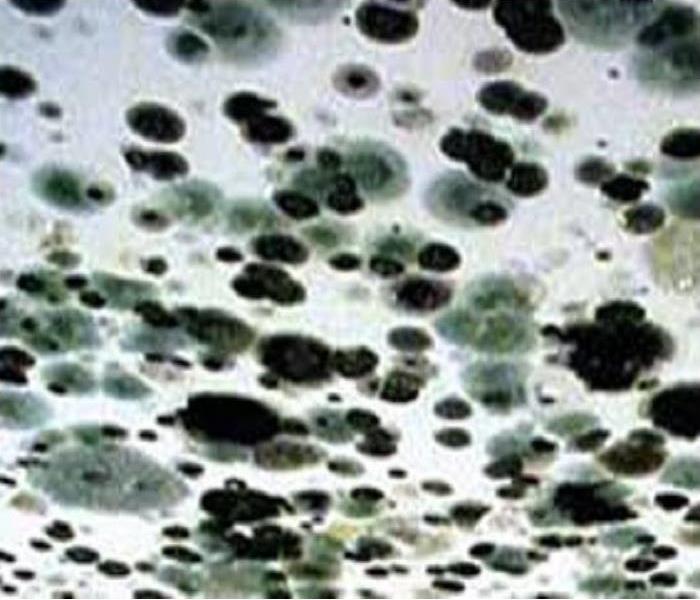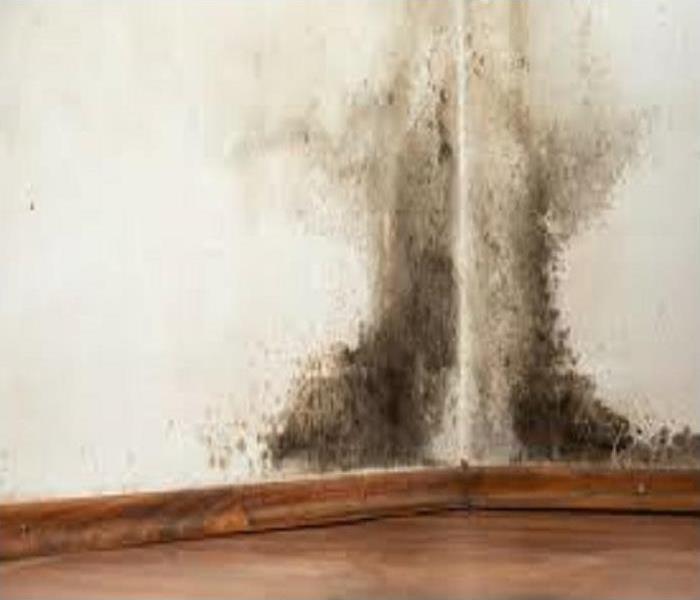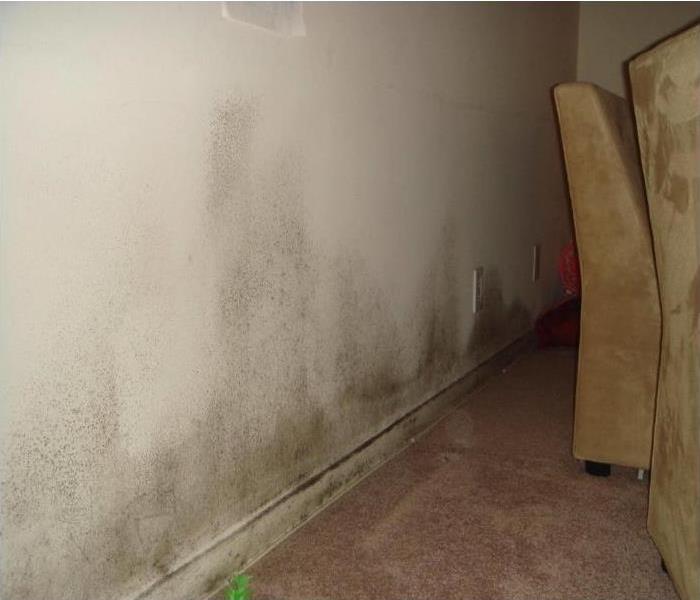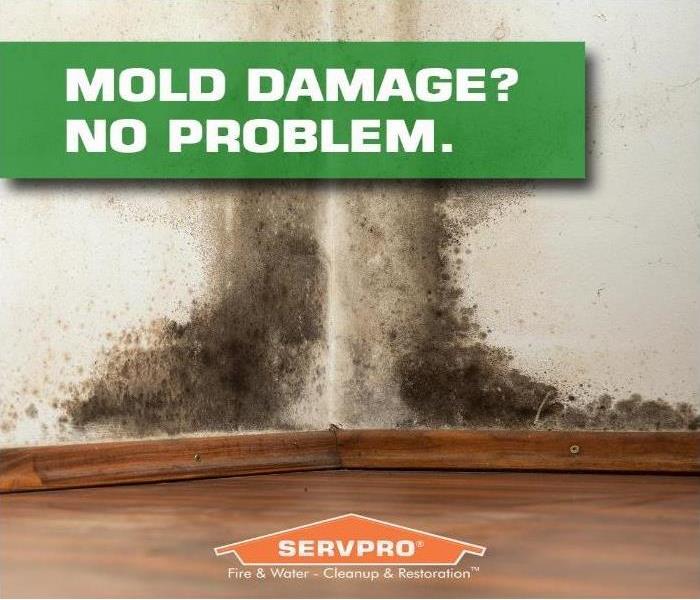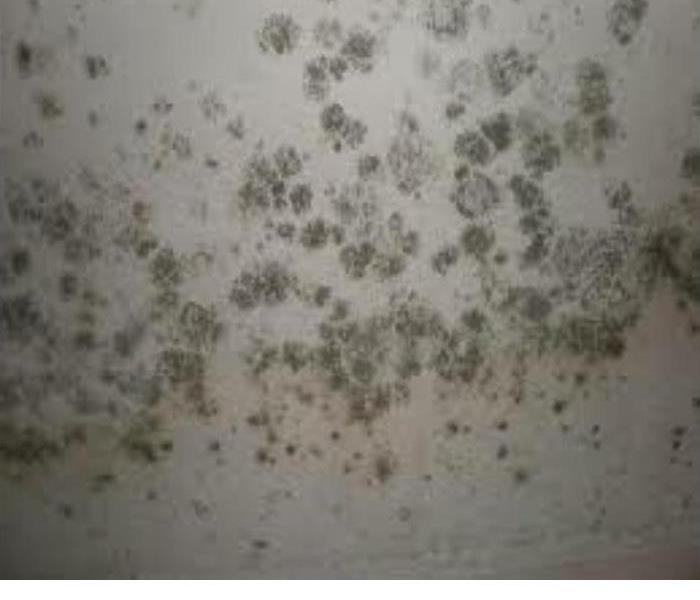Recent Mold Remediation Posts
Mold Remediation: Restoring Your Home, One Spore at a Time
9/3/2024 (Permalink)
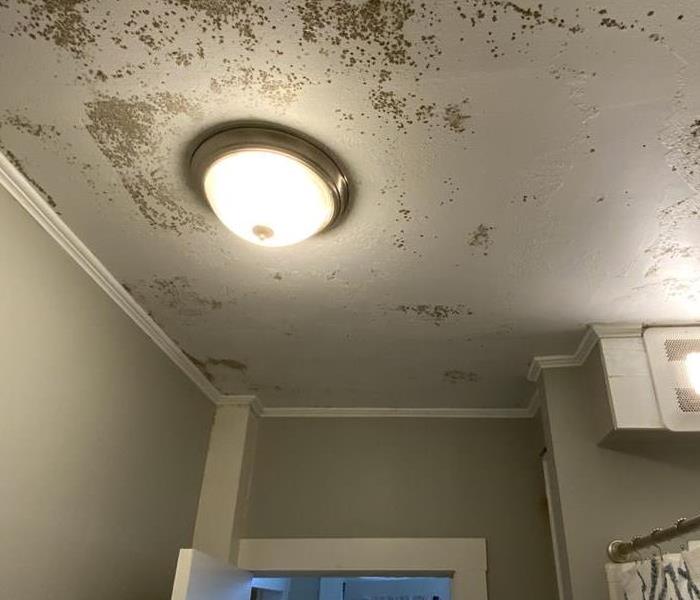 Mold might be a pesky problem, but with SERVPRO on your side, it’s a problem you can conquer. Let us handle the spores so you can get back to enjoying
Mold might be a pesky problem, but with SERVPRO on your side, it’s a problem you can conquer. Let us handle the spores so you can get back to enjoying
Mold. It’s one of those words that can send shivers down your spine, and for good reason. Beyond the unsettling sight of those unsightly patches, mold can cause health issues and damage to your home. But fear not! SERVPRO® is here to turn your moldy woes into a distant memory. Let’s walk through the process of mold remediation and how we can help restore your home to its former glory.
Understanding Mold: The Basics
Mold is a type of fungus that thrives in damp, warm environments. It reproduces by releasing tiny spores into the air, which can then settle on various surfaces and begin to grow. While some mold is harmless, others can cause health problems, especially for those with allergies or respiratory issues.
Common places where mold might lurk include:
- Basements: Often damp and poorly ventilated.
- Bathrooms: High humidity from showers and baths.
- Kitchens: Spills and leaks can create ideal conditions.
- Attics: Poor insulation or roof leaks can lead to mold growth.
Step 1: Inspection and Assessment
Before diving into remediation, the first step is to assess the situation. Our team at SERVPRO will conduct a thorough inspection to determine the extent of the mold problem. We use advanced equipment to identify hidden mold and moisture sources, ensuring we address every area affected.
During this phase, we’ll:
- Identify the type and extent of mold growth.
- Locate the source of moisture causing the problem.
- Assess any potential impact on your property.
Step 2: Containment
Mold spreads quickly, so containing it is crucial to prevent it from affecting other areas of your home. We’ll set up containment barriers and use negative air pressure to ensure that mold spores don’t escape to other parts of the property. Think of it as setting up a secure perimeter to keep the mold from making a grand escape!
Step 3: Mold Removal
This is where the heavy lifting begins. Our certified technicians will carefully remove and discard any materials that are heavily contaminated with mold, such as drywall, insulation, or carpets. We use specialized tools and techniques to ensure the mold is fully removed, not just brushed away. This step is essential for preventing future mold growth and ensuring your home is safe and clean.
Step 4: Cleaning and Sanitizing
Once the contaminated materials are removed, we focus on cleaning and sanitizing the affected areas. We use HEPA vacuums and antimicrobial treatments to clean surfaces and eliminate any remaining mold spores. This step ensures that any residual mold is effectively removed, leaving your home fresh and free from mold contamination.
Step 5: Drying and Dehumidification
Moisture control is key to preventing future mold growth. We use high-powered dehumidifiers and air movers to dry out the affected areas thoroughly. By reducing humidity and moisture levels, we help ensure that mold doesn’t find a way to make a comeback.
Step 6: Restoration
Once the remediation is complete, it’s time to restore your home to its pre-mold condition. We’ll repair and replace any damaged materials, such as drywall or flooring, and make sure everything is as good as new. Our goal is to not only remove the mold but also restore your home’s comfort and functionality.
Preventing Future Mold Growth
After remediation, it’s important to take steps to prevent mold from returning. Here are some tips to keep mold at bay:
- Control Humidity: Use dehumidifiers and air conditioners to keep humidity levels in check.
- Fix Leaks: Repair any leaks in roofs, walls, or plumbing promptly.
- Improve Ventilation: Ensure proper ventilation in high-moisture areas like bathrooms and kitchens.
- Regular Inspections: Periodically check for signs of moisture or mold.
Why Choose SERVPRO?
At SERVPRO, we pride ourselves on delivering high-quality mold remediation services with professionalism and care. Our team is trained, certified, and equipped with the latest technology to handle even the most challenging mold problems. We understand that dealing with mold can be stressful, which is why we work efficiently to restore your home and give you peace of mind.
If you suspect mold is affecting your home, don’t wait. Contact SERVPRO today for a comprehensive inspection and expert mold remediation services. We’re here to help you breathe easy and enjoy a clean, safe living environment.
Mold might be a pesky problem, but with SERVPRO on your side, it’s a problem you can conquer. Let us handle the spores so you can get back to enjoying your home, mold-free!
Understanding the Mold Panic: How SERVPRO® Can Alleviate Your Concerns
4/25/2024 (Permalink)
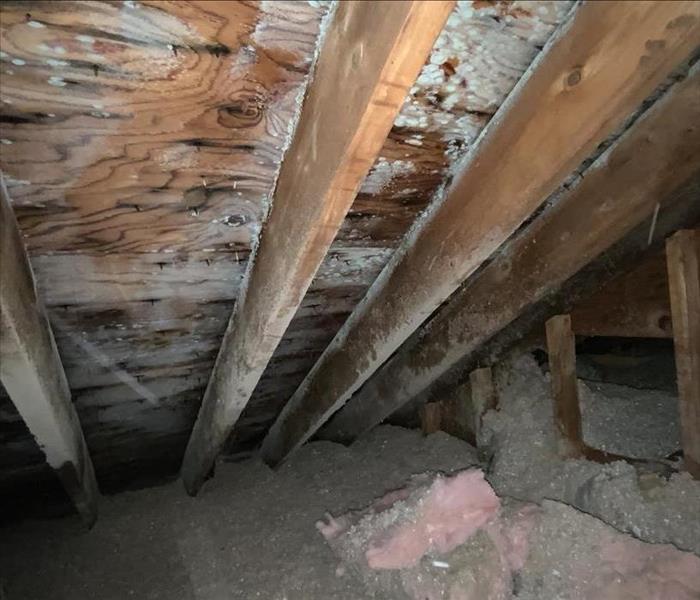 n the world of household woes, few things evoke the same level of panic as the sight of mold.
n the world of household woes, few things evoke the same level of panic as the sight of mold.
In the world of household woes, few things evoke the same level of panic as the sight of mold. Whether it's a small patch in the bathroom corner or a sprawling infestation hidden behind walls, the mere mention of mold can send shivers down the spine of even the most seasoned homeowner. But why exactly do people freak out about mold? And more importantly, how can SERVPRO come to the rescue to alleviate those concerns?
The Mold Menace: Understanding the Panic
Mold is not just an eyesore; it's a health hazard. The presence of mold spores in the air can trigger allergies, respiratory issues, and even more severe health problems in vulnerable individuals. The fear of compromised health is enough to send anyone into a frenzy at the first sign of mold growth.
Moreover, mold doesn't just stop at health concerns. It's a silent destroyer, wreaking havoc on property and belongings. From structural damage to ruined furniture and prized possessions, mold can leave a trail of destruction in its wake, leading to financial strain and emotional distress.
But perhaps what truly fuels the panic is the uncertainty surrounding mold. Its ability to thrive in hidden corners, behind walls, and in damp, dark spaces makes it a silent intruder, lurking undetected until it's too late. The fear of the unknown, coupled with the potential for extensive damage, makes mold a formidable foe that strikes fear into the hearts of homeowners everywhere.
The SERVPRO Solution: Restoring Peace of Mind
Enter SERVPRO, the trusted name in mold remediation and restoration. With our expertise and state-of-the-art equipment, we're not just in the business of cleaning up mold; we're in the business of restoring peace of mind.
Our team of certified professionals understands the urgency and sensitivity surrounding mold issues. We don't just treat the symptoms; we get to the root of the problem, identifying moisture sources and implementing effective solutions to prevent future mold growth.
At SERVPRO, we prioritize safety above all else. From containment to thorough cleanup and disinfection, we adhere to industry-leading standards to ensure that your home is mold-free and safe for you and your loved ones.
But our commitment doesn't end there. We understand that dealing with mold can be overwhelming, both emotionally and logistically. That's why we work closely with homeowners every step of the way, providing clear communication, guidance, and support throughout the remediation process.
So, the next time you find yourself facing the dreaded mold monster, remember that you're not alone. With SERVPRO by your side, you can breathe easy knowing that help is just a phone call away. Say goodbye to mold panic and hello to peace of mind with SERVPRO.
Identifying Common Types of Household Mold: A Comprehensive Guide
10/23/2023 (Permalink)
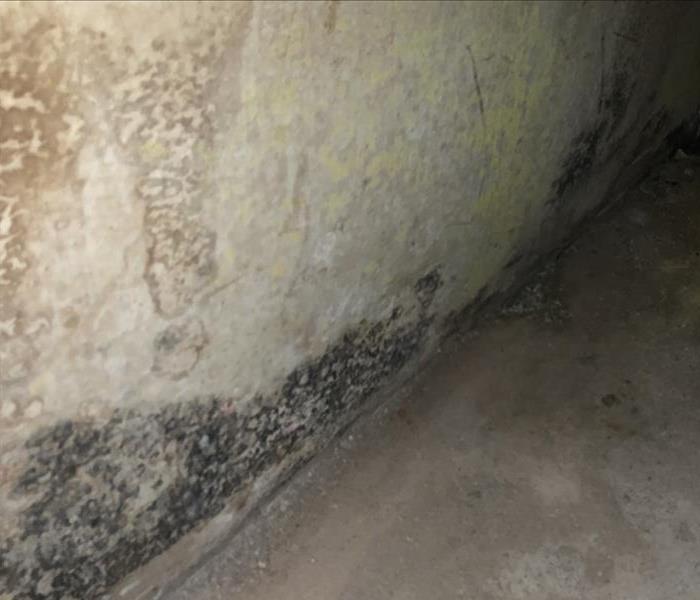 SERVPRO® is your trusted mold remediation company in the Lynn/Lynnfield area for any type growth that can be found.
SERVPRO® is your trusted mold remediation company in the Lynn/Lynnfield area for any type growth that can be found.
Mold is a common issue in households, and it comes in various types and colors. Being able to identify the different types of household mold is crucial for effective remediation and understanding potential health risks. In this comprehensive guide, we'll explore common types of household mold, their characteristics, where they are likely to appear, and the implications for your health.
1. Cladosporium:
- Appearance: Cladosporium is often olive-green, brown, or black and has a suede-like texture.
- Common Locations: This mold can be found on plants, in soil, and frequently in basements.
- Health Implications: It's known to trigger allergies and respiratory issues in some people.
2. Aspergillus:
- Appearance: Aspergillus is powdery and varies in color, including green, yellow, and white.
- Common Locations: It's found on decaying leaves, dust, and in air conditioning systems.
- Health Implications: Aspergillus can cause allergies and, in severe cases, lung infections.
3. Penicillium:
- Appearance: Penicillium is often blue or green and has a fuzzy texture.
- Common Locations: It's found on food, especially bread, and can grow on water-damaged materials in homes.
- Health Implications: Penicillium can trigger allergies and asthma in sensitive individuals.
4. Stachybotrys Chartarum (Black Mold):
- Appearance: Black mold is slimy and dark black or greenish-black in color.
- Common Locations: It thrives on water-damaged building materials, like drywall and wood.
- Health Implications: Black mold is associated with more severe health issues, including respiratory problems, skin irritation, and headaches.
5. Alternaria:
- Appearance: Alternaria is velvety-textured and is typically dark brown or black.
- Common Locations: It's found in damp areas like showers and around windows.
- Health Implications: Alternaria can cause allergic reactions and asthma in some people.
6. Fusarium:
- Appearance: Fusarium can be pink, white, or red and has a cottony texture.
- Common Locations: It's often found on water-damaged plants and in soil.
- Health Implications: Fusarium may cause skin and nail infections in some cases.
7. Aureobasidium:
- Appearance: Aureobasidium is dark brown to black and can have a suede-like texture.
- Common Locations: It's found on wooden surfaces, wallpaper, and painted surfaces.
- Health Implications: It may trigger allergies, particularly skin or eye irritation.
Conclusion:
Identifying common types of household mold is the first step in effectively managing mold issues in your home. While not all molds are equally harmful, it's essential to take mold seriously and address it promptly to prevent potential health risks. If you suspect mold in your home and are unsure of the type, consider consulting a professional for proper identification and remediation to maintain a healthy living environment.
How Mold Can Impact Your Health
6/18/2019 (Permalink)
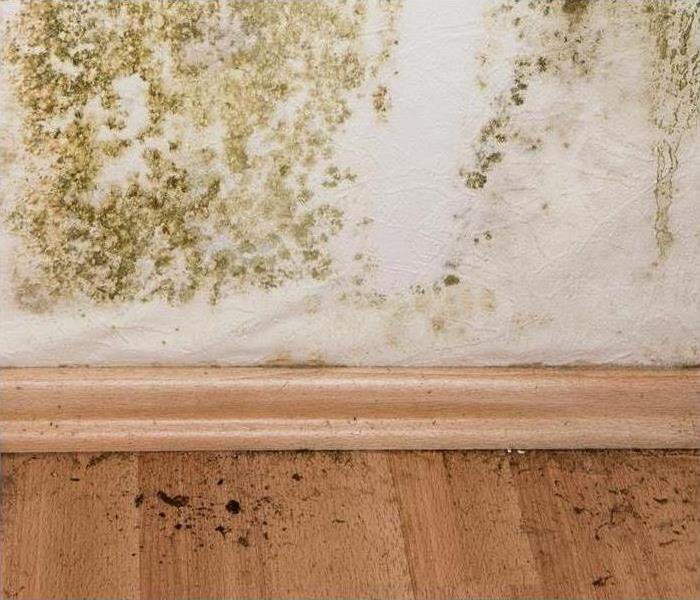 Hidden mold can have a negative impact on your health
Hidden mold can have a negative impact on your health
Chronic inflammatory response syndrome (CIRS) is a serious, multi-symptom illness that negatively impacts more than one system in the body. Most often is it caused by exposure to harmful biotoxins or neurotoxins in our environment. These toxins may be caused by:
- Mold in the home.
- Pfiesteria – Microscopic organism that produces toxins known to cause large fish kills.
- Cyanobacteria – Commonly found in lakes and rivers.
- Lyme disease – Transmitted by tick bites.
- Poisonous spider bites.
- Ciguatera – A toxin affecting reef fish that are often consumed by humans.
The effects of this inflammatory syndrome vary depending on the person and their experience. However, the respiratory, neurological, psychological, and gastrointestinal symptoms can be life-changing, no matter the source, which is why it is essential to know the signs and see your doctor if you think you have it. Remember, mold allergies are not the same as mold illness, so it is critical to determine the reason for your symptoms. If you recently had flooding in your home or the interior of your household has been humid, you will also want to determine if your symptoms of CIRS are being caused by exposure to mold in your home.
Characteristics of CIRS From Mold Exposure
It is important to know that the effects of chronic inflammatory response syndrome from mold exposure will present itself differently than if it was caused by something else, such as a spider bite, a burn or lyme disease. In fact, when a person develops this syndrome due to mold exposure specifically, they will usually experience some of these symptoms, in addition to those mentioned above:
- Headache
- Sinus congestion
- Sore throat
- Nosebleeds
- Itchy eyes
- Cough
- Flu symptoms
- Wheezing
- Stomach ache
These symptoms are also typical signs of illnesses like influenza, indoor and outdoor allergies, and the common cold, so it is important to see your physician if you have them.
Checking Your Home for Signs of Mold
No matter the cause, chronic inflammatory response syndrome is a severe illness with lasting consequences. In many cases, it does develop as a result of toxic mold exposure, which is why it is important to have your Lynn, Lynnfield or Nahant home checked if you or your doctor think mold may be causing your symptoms. A professional mold inspection completed by an experienced technician will determine if mold is present, and they will let you know what needs to be done to safely remove it.
SERVPRO of Lynn/Lynnfield is staffed with experienced experts that come to your home for a mold consultation. Call us today at 781.593.6663
How A/C Can Prevent Mold Growth in Humid Climates
8/7/2018 (Permalink)
HOW A/C CAN PREVENT MOLD GROWTH IN HUMID CLIMATES
The temperature in your home can affect you and your family’s comfort level tremendously, especially if you live in states with hot, humid summers like Massachusetts where we’ve been experiencing heat and humidity for most of July and August. However, living in such climates could have other consequences for your home and family, as humidity can contribute to mold growth. Fortunately, your air conditioner can prevent the growth of this fungus, while also keeping you cool.
HOW TEMPERATURES AND HUMIDITY CONTRIBUTE TO MOLD GROWTH
Mold needs certain conditions to grow, and unfortunately for those who live in hot and humid places like Massachusetts in the summer, the heat plus the humidity create a moist environment where mold and dust mites thrive. While the various types of mold have different optimum conditions for growth many kinds of mold will grow well when conditions are between 60F and 80F - the same temperature range we’re often comfortable in. Combine these temperatures with excessive moisture and you could have a mold problem in your home.
HOW AIR CONDITIONING CAN PREVENT MOLD GROWTH
Your air conditioner can control the temperature and humidity in your home, which can prevent mold growth. During the hot, humid summer months, set your air conditioner to between 68 and 72 degrees Fahrenheit. The relative humidity in your house should not exceed 50 percent. While most modern air conditioners dehumidify as they cool, they do not independently control both temperature and humidity, so you may want to purchase a stand-alone dehumidifier for when conditions are especially humid.
Other tips for using your air conditioner to prevent mold include setting your air conditioners fan mode to auto because setting it to “on” can cause moisture produced during the air conditioning process to be blown back into your home.
Commercial Mold Remediation
6/29/2018 (Permalink)
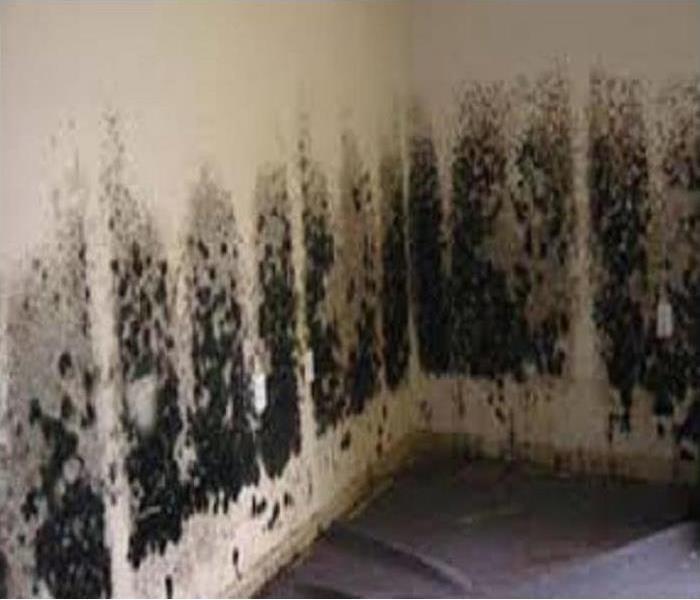 Mold in Basement of Commercial Building
Mold in Basement of Commercial Building
Besides causing a major business interruption, a mold problem can present a serious health risk for people exposed at your commercial property. Mold infestations can be caused by minor water intrusions, like a slow roof leak or loose plumbing fitting. Every hour spent cleaning up is an hour of lost revenue and productivity. If you suspect your property has a mold problem, call SERVPRO of Lynn/Lynnfield, who will respond quickly and work fast to manage the situation.
- 24 Hour Emergency Service
- Faster to Any Size Disaster
- A Trusted Leader in the Mold and Water Restoration Industry with over 1,700 Franchises
- Highly Trained Mold and Water Damage Restoration Specialists
Have a Mold Problem?
Call Us Today – 781-593-6663
Commercial Mold Remediation Presents Unique Challenges
Mold can spread quickly through a property if left untreated. SERVPRO of Lynn/Lynnfield can respond quickly, working to first contain the infestation to help prevent its spread to other parts of the building. Next, we will begin the remediation process, working safely and effectively to manage the situation. We have the training, experience, and equipment to contain the mold infestation and remediate it to preloss condition.
Learn more about SERVPRO of Lynn/Lynnfield’s training and certifications.
- Applied Microbial Remediation Specialist
- Water Damage Restoration Technician
- Applied Structural Drying Technician
- Odor Control Technician
- Upholstery and Fabric Cleaning Technician
If You See Signs of Mold, Call Us Today – 781-593-6663
Can Mold be Completely Removed?
6/15/2018 (Permalink)
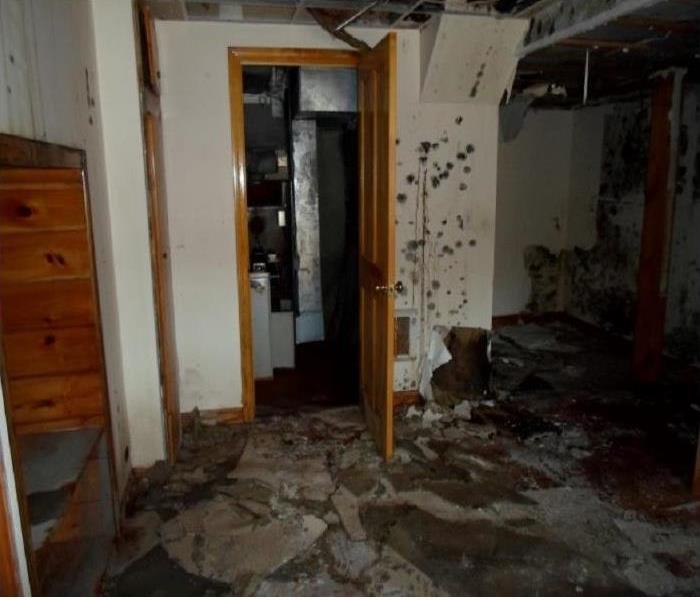 Mold Found in Basement
Mold Found in Basement
Some restoration businesses advertise “mold removal” and even guarantee to remove all mold, which is a fallacy. Microscopic mold spores naturally occur almost everywhere, both outdoors and indoors. This makes it impossible to remove all mold from a home or business. Therefore, mold remediation reduces the mold spore count back to its natural or baseline level.
Consider the following mold facts:
- Mold is present almost everywhere, indoors and outdoors.
- Mold spores are microscopic and float along in the air and may enter your home through windows, doors, or AC/heating systems or even hitch a ride indoors on your clothing or a pet.
- Mold spores thrive on moisture. Mold spores can quickly grow into colonies when exposed to water. These colonies may produce allergens and irritants.
- Before mold remediation can begin, any sources of water or moisture must be addressed. Otherwise, the mold may return.
- Mold often produces a strong, musty odor and can lead you to possible mold problem areas.
- Even higher-than-normal indoor humidity can support mold growth. Keep indoor humidity below 45 percent.
If your home or business has a mold problem, we can inspect and assess your property and use our specialized training, equipment, and expertise to remediate your mold infestation.
If You See Signs of Mold, Call Us Today
SERVPRO of Lynn/Lynnfield 781-593-6663
Mold Removal vs. Mold Remediation
6/6/2018 (Permalink)
What’s the Difference?
Since microscopic mold spores exist naturally almost everywhere, indoors and outdoors, removing all mold from a home or business is impossible. Many restoration businesses advertise “mold removal” and even guarantee to remove all mold. This is a fallacy. We understand mold and mold growth. SERVPRO of Lynn / Lynnfield has the training and expertise to remediate the mold in your home or business.
Signs of Mold? Call Today –
Understanding Mold
When water intrudes into your property, mold growth can start in as little as 48 hours. Consider the following mold facts:
- Mold is present almost everywhere, indoors and outdoors.
- Mold spores are microscopic, float along in the air, and may enter your home through windows, doors, or AC/heating systems or even hitch a ride indoors on your clothing or a pet.
- Mold spores thrive on moisture. Mold spores can quickly grow into colonies when exposed to water. These colonies may produce allergens and irritants.
- Before mold remediation can begin, any sources of water or moisture must be addressed. Otherwise, the mold may return.
- Mold often produces a strong, musty odor, and that odor can lead you to possible mold problem areas.
- Even higher-than-normal indoor humidity can support mold growth. Keep indoor humidity below 45 percent.
The Mold Remediation Process
Every mold damage scenario is different and requires a unique solution, but the general mold remediation process stays the same. Learn more about our mold remediation process.
- Emergency Contact - (781) 593-6663
- Inspection and Mold Damage Assessment
- Mold Containment
- Air Filtration
- Removing Mold and Mold-Infested Materials
- Cleaning Contents and Belongings
Some Basic Mold Information
6/4/2018 (Permalink)
Microscopic mold spores naturally occur almost everywhere, both outdoors and indoors. This makes it impossible to remove all mold from a home or business. Therefore, mold remediation reduces the mold spore count back to its natural or baseline level. Some restoration businesses advertise “mold removal” and even guarantee to remove all mold, which is a fallacy. Consider the following mold facts:
- Mold is present almost everywhere, indoors and outdoors.
- Mold spores are microscopic and float along in the air and may enter your home through windows, doors, or AC/heating systems or even hitch a ride indoors on your clothing or a pet.
- Mold spores thrive on moisture. Mold spores can quickly grow into colonies when exposed to water. These colonies may produce allergens and irritants.
- Before mold remediation can begin, any sources of water or moisture must be addressed. Otherwise, the mold may return.
- Mold often produces a strong, musty odor and can lead you to possible mold problem areas.
- Even higher-than-normal indoor humidity can support mold growth. Keep indoor humidity below 45 percent.
If your home or business has a mold problem, we can inspect and assess your property and use our specialized training, equipment, and expertise to remediate your mold infestation.
If You See Signs of Mold or Have Questions Regrading Mold, Please Give Us a Call @ SERVPRO of Lynn/Lynnfield
781-593-6663.
If You Suspect Mold in Your Home
6/4/2018 (Permalink)
If Your Suspect Mold in Your Home
In as little as 48 hours, mold can quickly become a problem in your home or business when there’s a water intrusion, like a roof leak or leaking water line. Mold can cause health effects and can also cause significant damage to your property. SERVPRO of Medford/Everett has the training, protective gear, and specialized equipment necessary to handle your mold problem.
Have a Mold Problem?
Call Us Today 781-596-6663
If you have a mold problem in your home or business, consider the following facts:
- Significant mold growth can occur in 48-72 hours.
- Mold may present a greater risk to children, the elderly, and anyone with respiratory problems.
- A strong, musty odor may indicate hidden mold behind drywall or under carpeting.
What to Do:
- Stay out of affected areas.
- Turn off the HVAC system and fans.
- Contact SERVPRO of West Atlanta / Downtown for mold remediation services.
What Not to Do:
- Don’t touch or disturb the mold.
- Don’t blow air across any surfaces with visible or suspected mold growth.
- Don’t attempt to dry the area yourself.
- Don’t spray bleach or other disinfectants on the mold.
Mold Remediation Services
If you suspect that your home or business has a mold problem call, SERVPRO of Lynn/Lynnfield We have the training, equipment, and expertise to handle the situation.
781-593-6663
What is Black Mold?
9/26/2017 (Permalink)
What Is Black Mold?
Stachybotrys chartarum is the type of mold often called “black mold” or “toxic mold”. Sensational news reports warn about the dangers of black mold and these stories can be alarming and confusing. Any mold in your home should be treated with caution – stay out of affected areas and don’t touch or disturb the mold.
Please refer to our Mold Damage Tips to learn more about mold and what to do until help arrives.
How Do I Tell If It’s Black Mold?
Since many types of mold can produce allergens and irritants, you should contact a qualified mold remediation company regardless of the color or type of mold. In many instances, multiple types of mold can exist in the same house or structure. If you suspect that you have a mold problem, contact a SERVPRO Franchise Professional immediately.
If You See Signs of Mold, Call Us Today
SERVPRO of Lynn/Lynnfield 781-593-6663
Understanding Mold
When water intrudes into your property, mold growth can start in as little as 48 hours. Consider the following mold facts:
- Mold is present almost everywhere, indoors and outdoors.
- Mold spores are microscopic, float along in the air, and may enter your home through windows, doors, or AC/heating systems or even hitch a ride indoors on your clothing or a pet.
- Mold spores thrive on moisture. Mold spores can quickly grow into colonies when exposed to water. These colonies may produce toxins harmful to humans and pets.
- Before mold remediation can begin, any sources of water or moisture must be addressed. Otherwise the mold may return.
- Mold often produces a strong, musty odor, and that odor can lead you to possible mold problem areas.
- Even higher-than-normal indoor humidity can support mold growth. Keep indoor humidity below 45 percent.
If You See Signs of Mold, Call Us Today
SERVPRO of Lynn/Lynnfield 781-593-6663
Mold Damage
8/9/2016 (Permalink)
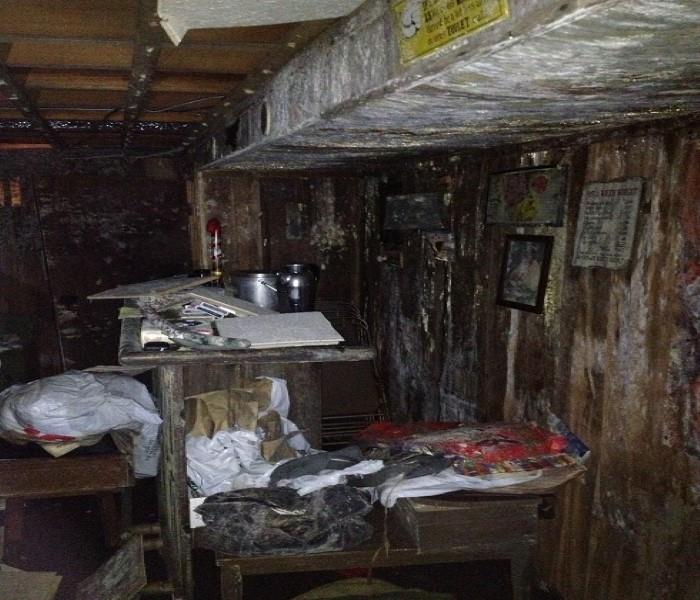 Mold in Basement
Mold in Basement
Title: Does Your Home Have A Mold Problem?
Category: Mold Damage
Photo Caption: Mold can spread through a home in as little as 48 hours.
Body:
Microscopic mold spores naturally occur almost everywhere, both outdoors and indoors. This makes it impossible to remove all mold from a home or business. Therefore, mold remediation reduces the mold spore count back to its natural or baseline level. Some restoration businesses advertise “mold removal” and even guarantee to remove all mold, which is a fallacy. Consider the following mold facts:
- Mold is present almost everywhere, indoors and outdoors.
- Mold spores are microscopic and float along in the air and may enter your home through windows, doors, or AC/heating systems or even hitch a ride indoors on your clothing or a pet.
- Mold spores thrive on moisture. Mold spores can quickly grow into colonies when exposed to water. These colonies may produce allergens and irritants.
- Before mold remediation can begin, any sources of water or moisture must be addressed. Otherwise, the mold may return.
- Mold often produces a strong, musty odor and can lead you to possible mold problem areas.
- Even higher-than-normal indoor humidity can support mold growth. Keep indoor humidity below 45 percent.
If your home or business has a mold problem, we can inspect and assess your property and use our specialized training, equipment, and expertise to remediate your mold infestation.
If You See Signs of Mold, Call Us Today
SERVPRO of Lynn/Lynnfield
781 593-6663
 Mold might be a pesky problem, but with SERVPRO on your side, it’s a problem you can conquer. Let us handle the spores so you can get back to enjoying
Mold might be a pesky problem, but with SERVPRO on your side, it’s a problem you can conquer. Let us handle the spores so you can get back to enjoying





 24/7 Emergency Service
24/7 Emergency Service



